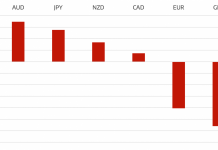The Private Equity has largely remained focus in North America and Europe for decades. Its penetration in emerging markets has been very low. However, there have been encouraging signs in these markets. Investments in emerging markets have given higher returns compared to that in traditional markets.
Last decade International Finance Corporation (IFC), the private sector arm of the World Bank Group, invested $2 billion in over 100 emerging market private equity funds giving it exposure to around 1,000 underlying portfolio companies. Its portfolio achieved IRR of 20% with 300 underlying exits; substantially outperforming the relevant benchmarks. The success of the IFC’s investment is one of the examples that demonstrate growing opportunities in Emerging Markets for Private Equity.
Private Equity finds more attractive opportunities in emerging markets for fund raising and deployment. Let us have a look at China and India, the two largest emerging markets. Both countries attract more capital seeking the attractive returns. For example, five of the top 10 largest venture capital investments globally last year were in China and India; the value of deals jumped three times over previous year.
Both China and India are the land of rising households’ income of middle class and also increasing number of Forbes billionaires list. China and India which together constitute one-third of world population offer good opportunities for investments. Local investor capital is also entering into the alternative investment industry. Though the two countries did not go into recession, both are passing through slowdown phase. Let us have some more insights in their economy and their suitability for private equity investments.
Private Equity activity in China
2014 was a bumper year for private equity in China with over 50% increase in volumes and 100% increase in value from previous year. Around 600 PE deals valued at $73bn took place. Local PEs participated in outbound deals in overseas businesses with a strong China angle in their growth strategies. The outbound deals increased by a third. Number of exits increased with M&A as the preferred exit channel. Most of the LPs realized a book-value IRR of 10% to 25% on their portfolio investment.
China has 6,000 private equity funds, managing $325 bn assets. China, the world’s second biggest economy, is undergoing structural reforms to rebalance its economy. From an investment-driven and export oriented economy, it is now moving to a more services- oriented, consumption powered one. Success story such as Alibaba shows that domestic consumption and e-commerce in China has expanded with a rising and increasingly sophisticated middle class in the country.
Investors are attracted by a series of stimulus measures announced last year and the on-going reforms of state-owned enterprises (SOEs). PEs play a key role in the reform of State Owned Enterprises (SOEs).
Though China is passing through the slowdown phase since 2012, but it continues to record positive growth rate of above 7%, still an impressive figure from global standard. China’s economy is likely to become the world’s largest economy in 2024. It may displace the US, which has held the top position for more than a century. A three-fold rise in consumer spending in China will help the country overtake US, according to IHS Inc., a global industrial data and analysis company.
“In 2015, the PE industry is likely to see larger deals and buyouts,” says PwC. SOE reform projects and early-stage projects offer opportunities for PEs. The high growth rate of China provides easy Exit routs through IPOs, strategic trade sales and secondary PE sales. However, experts including IMF have warned that China may face a “hard landing” if it fails to implement structural reforms to make this level of growth more sustainable in the long run. China needs to continue with bold and path-breaking reforms to sustain the PEs momentum.
Private Equity activity in India
India, too, witnessed an increase in PE activity in 2014. PE investments valued $11 bn made in 2014, a 17 per cent increase over previous year. E-commerce took the lead and real estate sector saw a renewed interest. Flipkart, India’s largest e-commerce marketplace, raised $1 billion, biggest funding ever by any Indian. There were over 200 exits valued $3.8 bn. IFC also partly exited one of its two-year-old investments with about 3.6x returns. With stock market at its peak, the exit routes have become easier at higher valuations.
95% of the PE capital in India comes from international investors. Recent changes in the Indian Government approach have caused a surge in optimism amongst the global business community. The Investors are looking for transformation through major reforms in India, a country shaken by crony capitalism, corruption, political paralysis and lethargic bureaucracy since long. Supply bottlenecks arising from problems in the regulatory framework for mining, energy, telecommunication and other sectors need to be addressed to make India more attractive for Private Equity investments.
To conclude, Emerging markets bring a wealth of opportunities, but often with new challenges. PE/ VC Managers have to recognize the distinct financial and cultural aspects of a country or region, deal with the complexities of emerging-market fundraising and investments. Emerging markets require a different investment strategies and efforts for each region. PE Managers have to pick up new funding opportunities and hug earlier-stage investments in emerging markets.
Kanchan Kumar is an experienced finance professional and has worked as an Executive Director and Advisor with the MNCs. He is a former banker with two decades of working experience with a Financial Institution. He is a rank holder in MBA (Finance) and Gold Medallist in MS (Statistics). He has passion for research and has also taught at a University. He writes on Global Economy, Finance and Market.




































